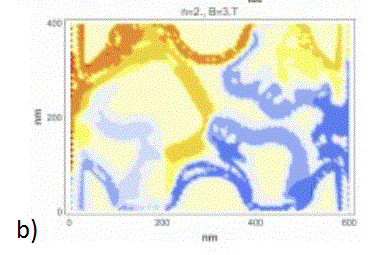
Josef Oswald
Montanuniversität Leoben, Austria
Title: Many particle interactions in the integer quantum hall effect regime
Biography
Biography: Josef Oswald
Abstract
Even more than 35 years after discovery of the integer quantum Hall effect (IQHE), it is widely believed that the IQHE regime is dominated by single-particle interactions. Up to date the widely accepted and state of the art model for screening in the IQHE regime is the model of Chlovskii, Shklovskii and Glazman (CSG) which is based on pure Hartree interactions. Recent scanning gate microscopy (SGM) experiments by Pascher et al. (ETH Zürich) indicate that the screening behaviour within the so called compressible stripes is much weaker than predicted by the CSG approach. In a recent paper, we argue that quite opposite to the common belief, the early models for the IQHE based on non-interacting single particles have been most successful not because of the absence, but rather due to the dominance of many-body effects. We utilize a fully self-consistent Hartree-Fock implementation and a network model for magneto transport close to equilibrium. Our results indicate a strong tendency of the electron system to avoid the simultaneous existence of partially filled spin-up and spin-down Landau levels (LL), similar to a Hund's rule for the occupation of the spin split LLs. Instead of a continuous lateral variation of the carrier density we get an exchange driven mixture of condensed clusters of full and empty LLs, which leads also to a reduced screening. At higher LLs these clusters are surrounded by novel halfodd integer stripes (Fig.1a) that serve as transmitting channels for transport (Fig.1b). In order to avoid a violation of the physics of coherent many-particle quantum transport, we use a network model for magneto transport that does not make explicit use of single carrier flow, but instead addresses the lateral transmission of the non-equilibrium chemical potential that is introduced by the current supply contacts. Various examples will be given for demonstrating the role of many body interactions.


Figure: a) Lateral filling factor distribution of the highest partly filled spin-up LL in the QH transition regime as obtained from the Hartree-Fock calculation. The filling factor rage around υ=1.5 is highlighted in light gray that clearly indicates a terrace like structure.
b) Lateral distribution of the injected non-equilibrium chemical potential as obtained from the non-equilibrium network model.

